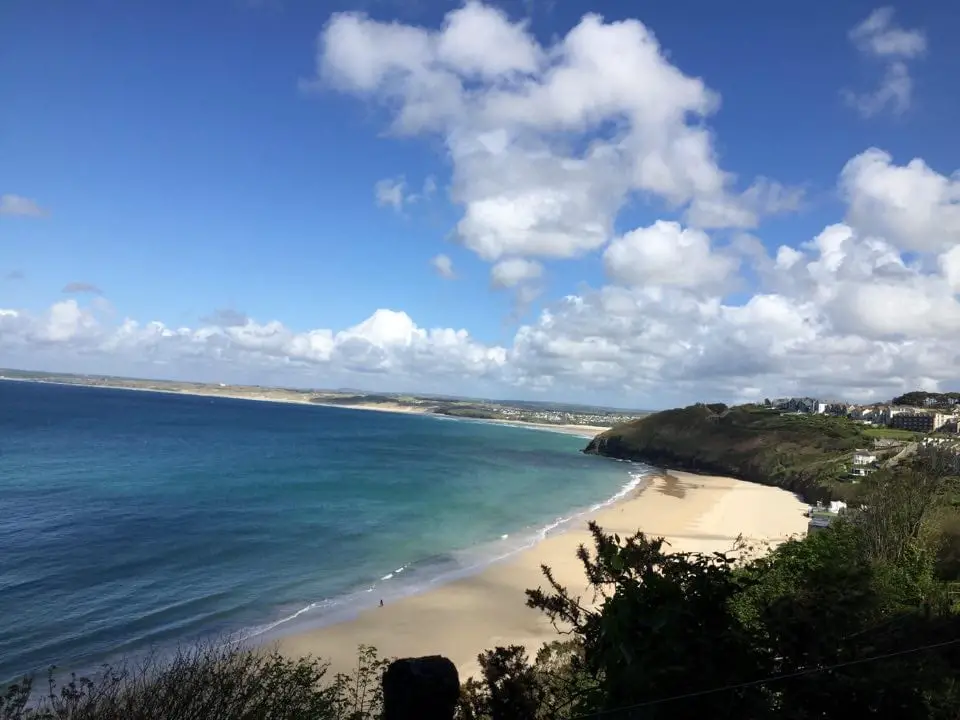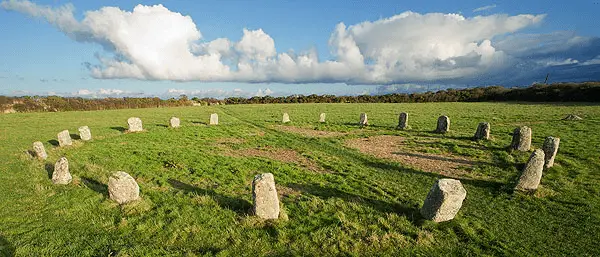There’s nothing quite like the magic of stepping into a cave for the first time. Ducking under magnificent stalagmites or squeezing through narrow, cosy archways, you feel like you’re entering a secret, special place. Cornwall caves are some of the best in the UK.
For millennia, early human beings – our ancestors – lived and worshipped in caves worldwide. Perhaps because of this, we feel a mysterious affinity with them. They are part of our evolution, and every time we set foot in one, we wave back to the long line of people who came before us.
Cornwall Caves
This sense of the ethereal has captured many diverse characters over the ages, and history is scattered with fascinating stories involving caves, especially here in Cornwall with it’s wild and breathtaking coastlines.
The combination of majority granite stone and the endless buffeting of the sea mean that the Cornish peninsula is covered with thousands of caves. And while many of these are dangerous and difficult to get to (should never be attempted without the help of a local guide), others are easily accessible and just as rich in history.
Below we’ve highlighted four locations which we think are perfect for intrepid children and curious grown-ups alike.
Have fun and happy caving!
This post may contain affiliate links, which means I may receive a commission, at no extra cost to you, if you make a purchase through a link. Please see my full disclosure for further information.
Merlin’s Cave
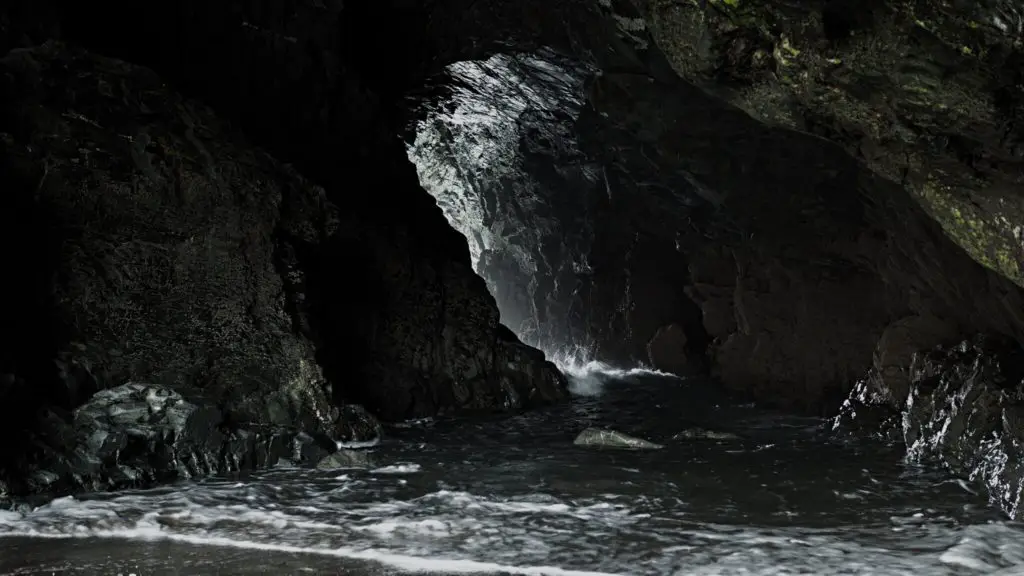
Location: Tintagel Castle. South-west of Boscastle, Cornwall.
Opening Times: Every day from noon to midnight.
Price: Access to the cave and beach is free, but if you want to see Tintagel Castle, there is an entry fee of £17.60 per adult and £10.60 per child (family tickets are also available). Use the code EHS10AFF for 10% off all orders with English Heritage.
We had to start the list with one of the most legendary caves in all of the UK.
Believed to be the home of Merlin himself and the birthplace of King Arthur – well, soft-of. The story goes that the infant future king of England was washed ashore by the benevolent waves of the Celtic Sea, laying him gently on the soft sands so that Merlin could carry him to the castle and the throne.*
Whether or not you’re a fan of myth and legend, you can’t help but be filled with a sense of wonder at the sheer size and shape of this cave. Around 100 metres (330 ft) long, the cave passes directly underneath Tintagel Island from Tintagel Haven on the one side and West Cove on the other.
The cave opens directly into the sea, so feel free to bring a towel and have a dip right after your adventure. Even some nearly stones make great jumping spots when it’s safe to do so.
Kids will love walking through these mystical depths on a carpet of beautiful shimmery pebbles while parents can practice their photography skills (hard to go wrong in such a gorgeous place) or even have a go at some old-fashioned story-telling with an Arthurian tale or two!
Please bear in mind there are some steep steps down to the beach, and – importantly – be sure to check the tides as this is an active sea cave and fills with water twice a day.
*As told by Tennyson in his poem Idylls of the King.
#2 St Cuthbert’s well & Holywell Sea Caves
Location: The southwest corner of Kelsey Head, Cornwall.
Opening Times: Dependant on tides.
Price: Free.
Also known as Holywell Cave, the sacred well of St Cuthbert (not to be confused with St Cuthbert’s Cave in Northumberland) is a stunning example of a natural cave intricately shaped by the motion of the sea.
The cave takes its name from another legend concerning the character of St Cuthbert of Lindisfarne in northern England.
The story goes that in the year 995, as hordes of ruthless Vikings were raiding the monasteries of the north, monks decided to remove the bones of St Cuthbert and take them to Ireland for safekeeping.
Unfortunately, monks are generally not famous for their sailing skills, and the boat flew off course, eventually landing on this beach in Cornwall. St. Cuthbert’s holy remains were placed in the cave waters, and that’s what created the curious and sacred shapes in the rock – the holy well. Throughout the years, thousands of pilgrims have journeyed here. And even today, people come from all over the world to pray or be cured in these waters.
Stories aside, this cave is famous for its bright-coloured stone and iridescent hues. If you can catch it at the right time of day, the sunlight ricochets off the walls creating stunning patterns of red, green, white and purple. Be sure to bring your camera for this truly striking natural display.
On your way to the cave, you’ll pass a series of wide sandy beaches perfect for the kids to explore and get lost in along the way. This could also be a great destination if you have dogs, as the open spaces are ideal for driftwood throwing and fetching.
This cave is not signposted, so be sure to check the map carefully before setting off; again, this is an active sea cave, so very important that you read up on the tides before departure. This cave can only be accessed at specific times when the tide is very low, and the entrance is exposed.
#3 Prussia Cove – A Wondrous Sea Cave
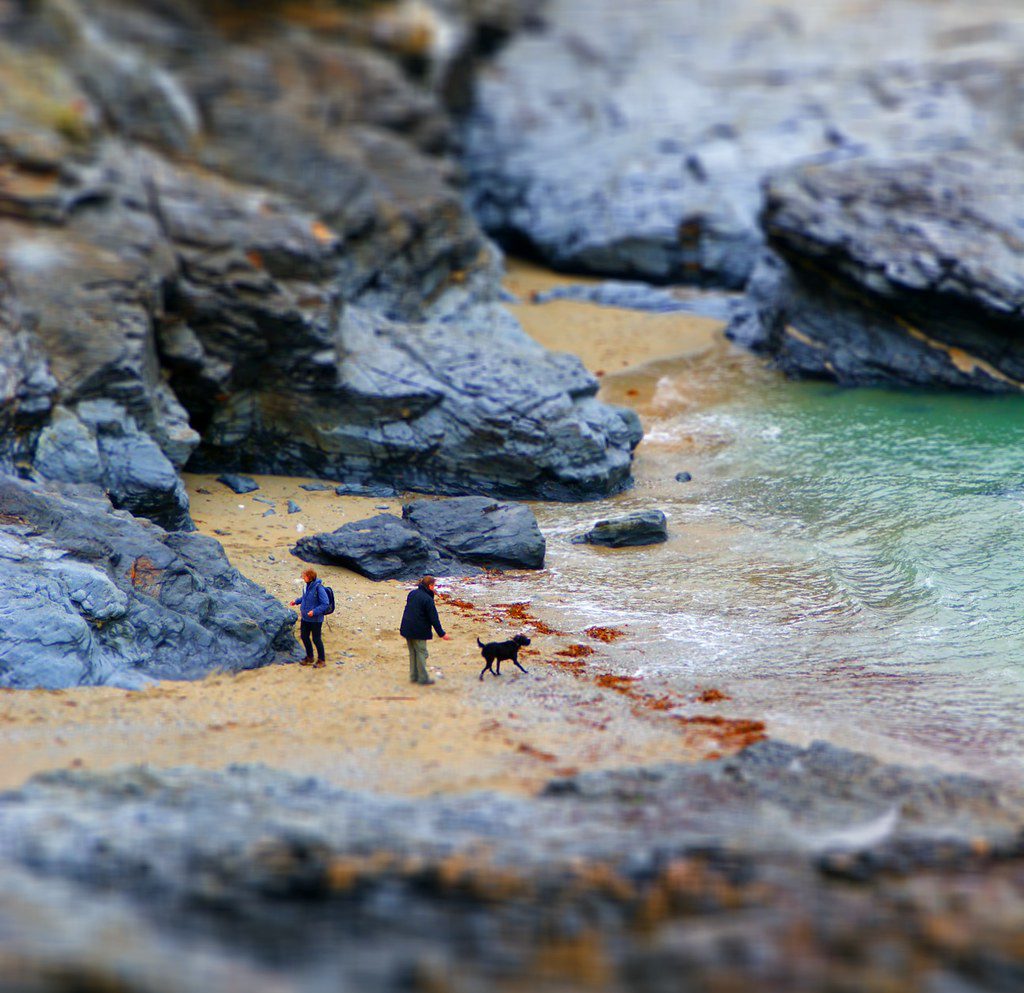
Location: Coast of Mount’s Bay, east of Cudden Point, Cornwall.
Opening Times: Dependant on tides.
Price: Free.
The curiously named Prussia Cove comes with – yep, you guessed it – another story.
The ‘Prussian’ in question was a man named John Carter, who in the 18th century gained a reputation as a notorious smuggler and shipwrecker.
He had nothing to do with ‘Prussia’ (Russia) but apparently had a very similar likeness to the then king of Prussia, Frederick II. However, how anyone is supposed to have made that comparison in an age before photography, nobody knows.
What we do know is that John Carter ran numerous smuggling rackets all up and down the coast, using these caves as his home and primary base. He was one of the most successful smugglers of the 18th century, alongside his two brothers, Harry and Charley. Talk about a family business.
When you visit Prussia Cove, you’ll walk through a Site of Special Scientific Interest (SSSI) and an Outstanding Natural Beauty (AONB) area. The four small coves along the cliff are named Piskies, Bessy’s, king’s and Coule’s – from west to east, respectively.
Whether you’re coming here to get away from it all or to simply enjoy the local history and soak up the atmosphere of Cornwall, you won’t be disappointed by Prussian Cove. It has an air of old-world charm and beauty which seems to defy time. Parents can relax on the pebble beach while children pretend to be pirates.
Be aware this little secret spot can only be reached via a narrow, winding pathway from the small car park. And, at the cost of repeating ourselves: please check the tides first!
Carnglaze Caverns & Slate Quarry
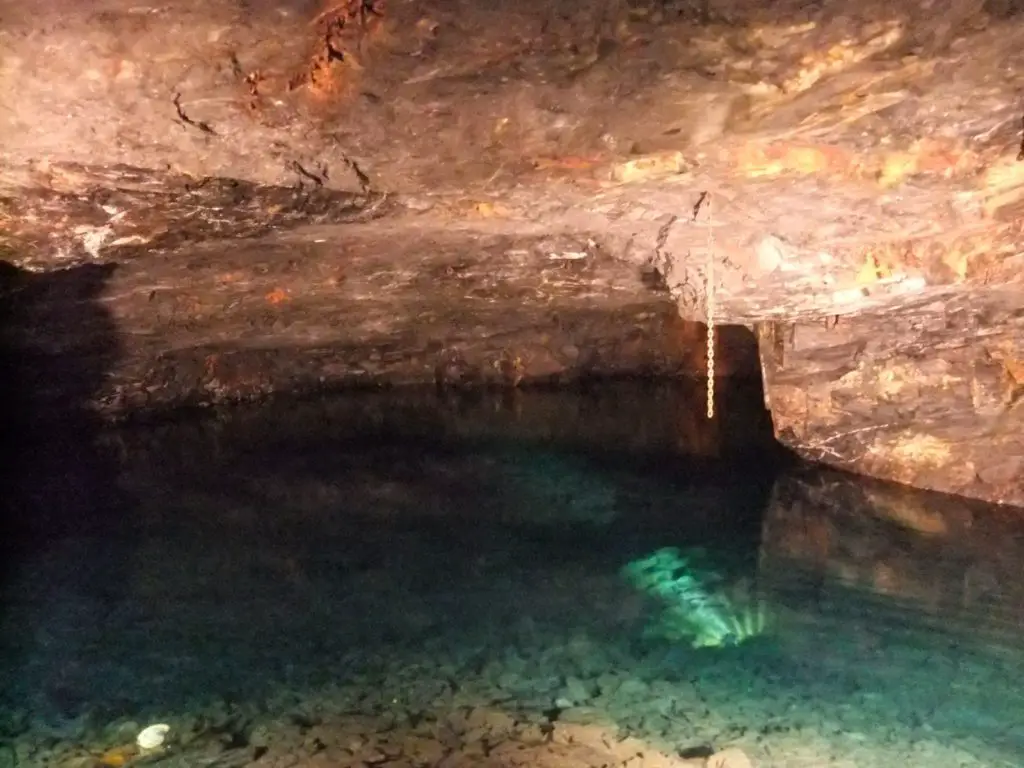
Location: St Neots, Liskeard, Cornwall.
Opening Times: Mon-Sat 10am-5pm
Price: Adults – £8 / Children – £5 / Family 2+2 £22.50
Last on our list is something a little different. While all the other caves here are natural sea-coves formed over hundreds of years by the power of the waves, the Carnglaze Caverns were blasted out of the rock using gunpowder!
These man-made caves were built by slate miners in the 1700s, working in cramped conditions by candlelight to serve the huge demand of the Industrial Revolution. They were later used in WW2 as a vital storage base for Navi soldiers at nearby Plymouth port.
What did they store here? Why the fuel of all good sailors, of course: rum.
This ruggedly beautiful location is perfect for a large family outing. Unlike the others on this list, it’s an all-weather attraction, and – for once – you don’t need to check the tides.
The caverns are surrounded by delightful wood, which you can explore and enjoy while you wait your turn inside – for safety, only a certain number of people are allowed in at any one time. Once inside, you’ll need to embark on a self-guided underground tour. After seeing the tunnels and cave delights, you’ll end your adventure at a stunning underground lake, blue/green water sparkling in the torchlight.
This location also doubles as a unique music and entertainment venue – there’s a well-stocked bar (plenty of rum), and the acoustics are said to be second-to-none. You can even get married here!
One thing: be sure to wear suitable footwear and nice warm clothing. It can get chilly and muddy. It’s Cornwall, after all!
View More things to do in Liskeard with Kids >>>
Recent Posts
-
St Ives to Carbis Bay on the South West Coast Path
0 shares Share Tweet Pin The coastal path from St Ives to Carbis Bay is one of the most scenic walks in Cornwall. This St Ives to Carbis Bay walk is a small yet beautiful part of the Carbis Bay coastal path. The route is part of the South-West Coastal Path, a long-distance footpath of…
-
5 Stone Circles in Cornwall to Visit
Looking for stone circles in Cornwall? Cornwall’s ancient sites are some of the most beautiful and unique in the world. If you, or your loved ones, are charmed by stone circles, you’re not alone. Thousands flock to Cornwall every year to witness the splendour of these prehistoric monuments. But don’t worry, due to their outdoorsy…
-
21 Family-Friendly Cottages with Private Swimming Pools in Cornwall
When planning a trip to Cornwall with kids, one of the biggest concerns is finding suitable accommodation. Luckily, there are plenty of options in Cornwall; hotels, b&bs, holiday parks, and guest houses are all great options. But, if you are looking for something a bit different, with a bit more freedom, why not consider staying…

